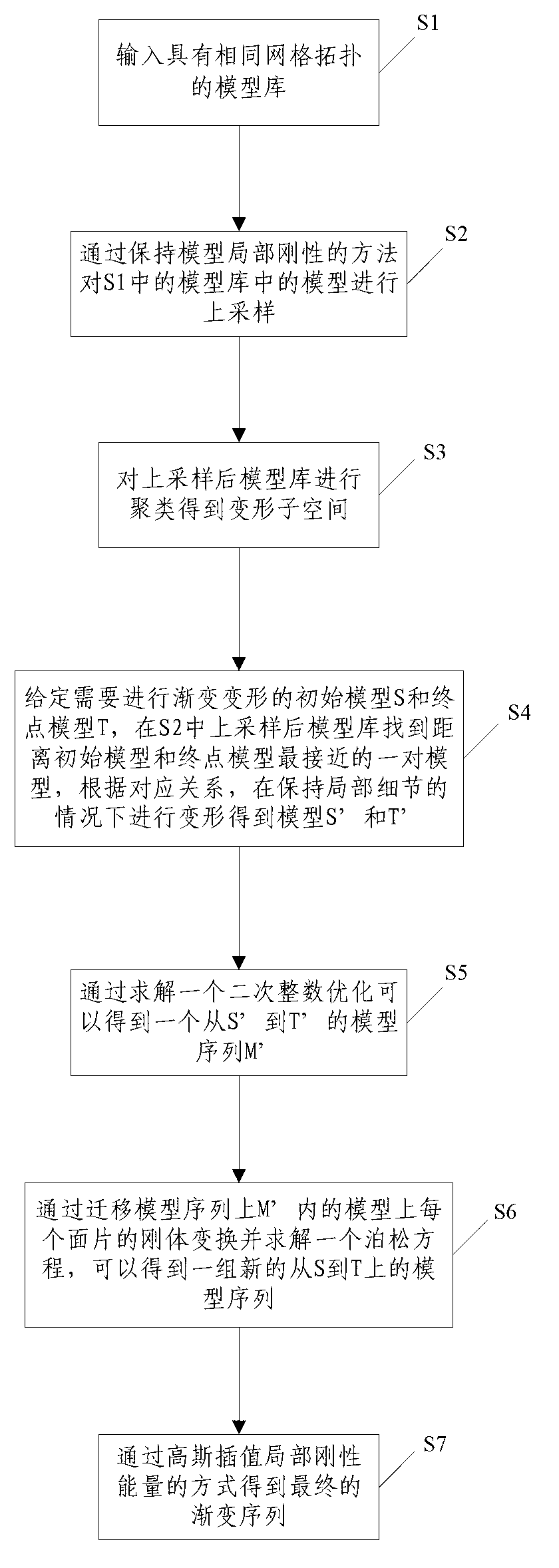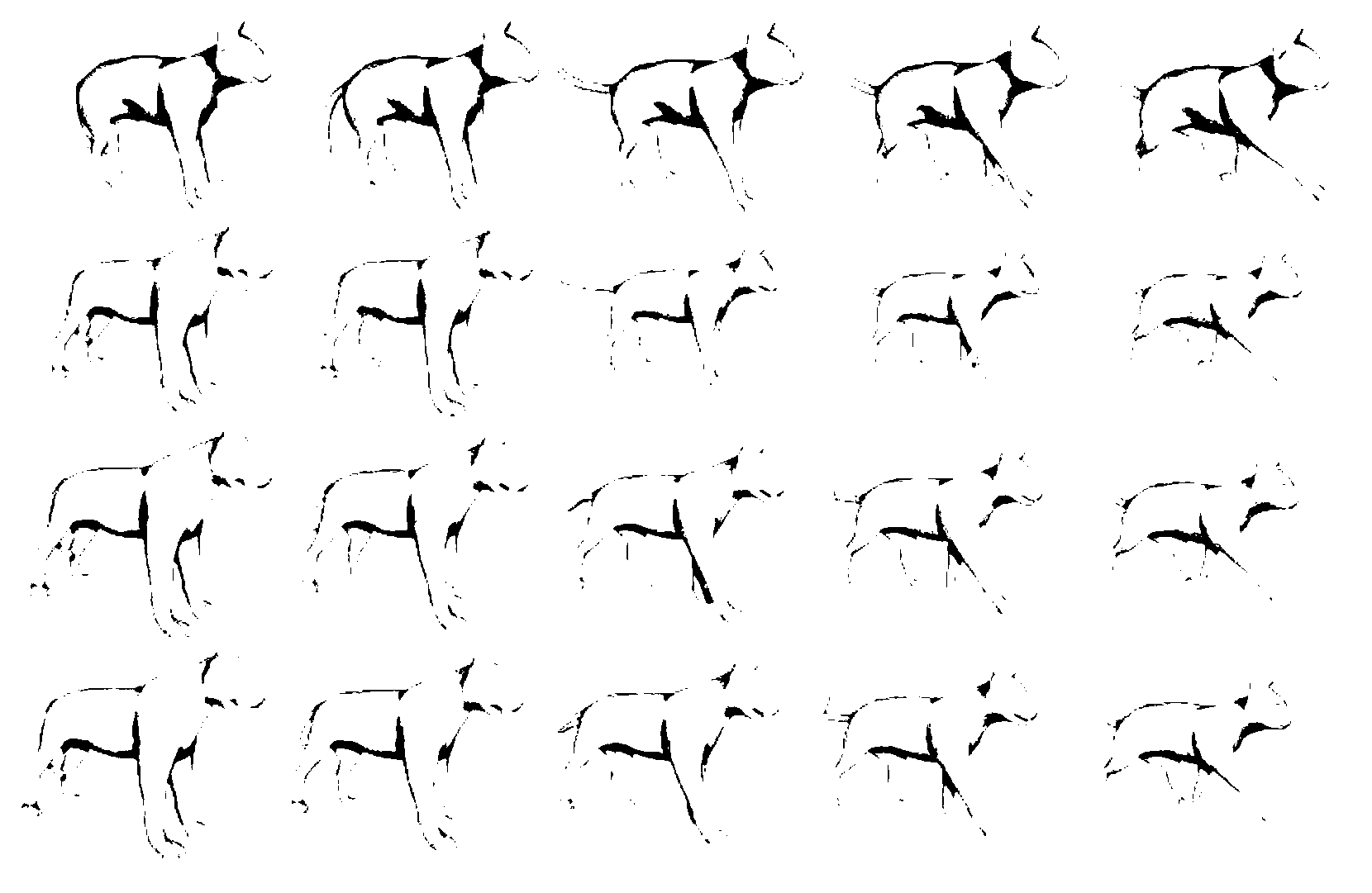Data-driven model gradual deformation method
A data-driven, model-based technology, applied in image data processing, 3D image processing, instruments, etc., can solve problems such as unreasonable gradient effect model self-intersection, unreasonable gradient effect, unnatural, etc.
- Summary
- Abstract
- Description
- Claims
- Application Information
AI Technical Summary
Problems solved by technology
Method used
Image
Examples
Embodiment Construction
[0029] The specific implementation manners of the present invention will be further described in detail below in conjunction with the accompanying drawings and embodiments. The following examples are used to illustrate the present invention, but are not intended to limit the scope of the present invention.
[0030] Such as figure 1 As shown, the present invention provides a data-driven model gradient method, including:
[0031] S1: Input the model library with the same grid topology, and obtain a series of model libraries with the same grid topology by scanning the model and then deforming it with a template or editing the same model;
[0032] S2: Upsample the models in the model library in S1 by maintaining the local rigidity of the model. Interpolation between any two models of , to get a new model;
[0033] S3: Cluster the upsampled model library to obtain the deformation subspace, that is, perform adaptive clustering on the upsampled model library, and the convex hull f...
PUM
 Login to View More
Login to View More Abstract
Description
Claims
Application Information
 Login to View More
Login to View More - R&D
- Intellectual Property
- Life Sciences
- Materials
- Tech Scout
- Unparalleled Data Quality
- Higher Quality Content
- 60% Fewer Hallucinations
Browse by: Latest US Patents, China's latest patents, Technical Efficacy Thesaurus, Application Domain, Technology Topic, Popular Technical Reports.
© 2025 PatSnap. All rights reserved.Legal|Privacy policy|Modern Slavery Act Transparency Statement|Sitemap|About US| Contact US: help@patsnap.com


